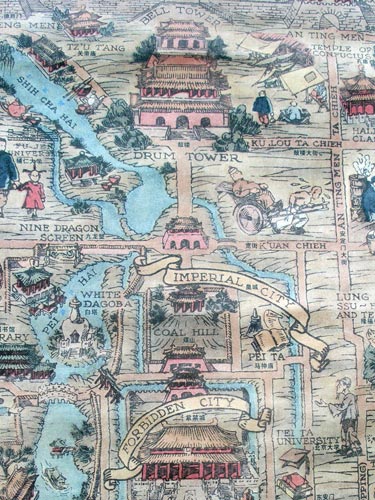
Click for more map
The hutongs (or alleys) are often named after what function they used to serve (market, temple, animal, etc).
The bell and drum towers
Bell and drum towers served as time-announcing centers during the Yuan, Ming and Qing Dynasties (1271 - 1911). Civil and military officials oriented their lives around these time signals. The towers lost their function in 1924 when Puyi, the last emperor, was forced to leave the Forbidden City.
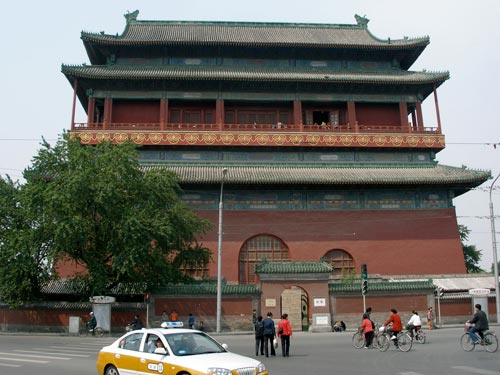
The drum tower
The Drum Tower was built in 1272 during the reign of Kublai Khan, at which time it stood at the very heart of the Yuan capital, Dadu. In 1420, it was reconstructed to the east of its original site, and in 1800, large-scale renovations were carried out. At one point, the upper story housed 24 drums, of which only one survives today. Its head is made of an entire ox hide and is almost five feet in diameter.

The bell tower
The Bell Tower first came into use during the reign of the Ming Emperor Yongle. It was converted from the main hall of the former temple which had been built during the Yuan Dynasty. It was unfortunately destroyed by fire after only a brief existence and it was not until 1747 that Emperor Qianlong undertook the reconstruction of this durable stone structure.
The Bell Tower originally housed a huge iron bell, but because its tolling was not loud enough, it was replaced by a massive cast bronze bell over 10 inches thick that could be heard over 10 miles away. It is the heaviest bell in China. The old iron bell was moved to the back of the Drum Tower where it has remained for over 500 years.
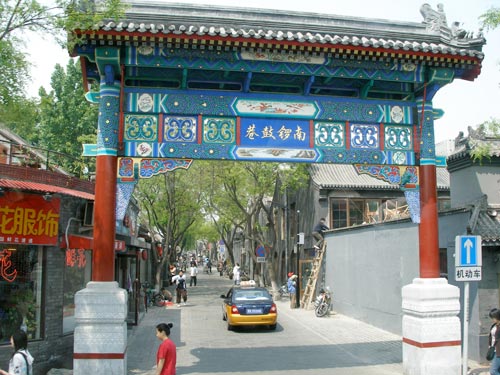
One of the main entry gates to the historic area

The whole area was under lots of construction in order to get ready for the Olympics.
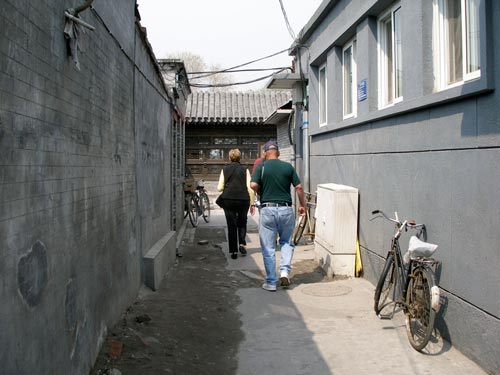
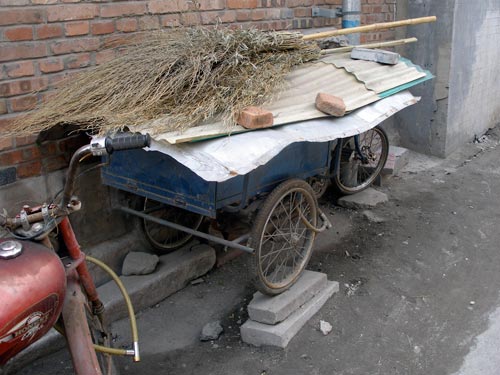

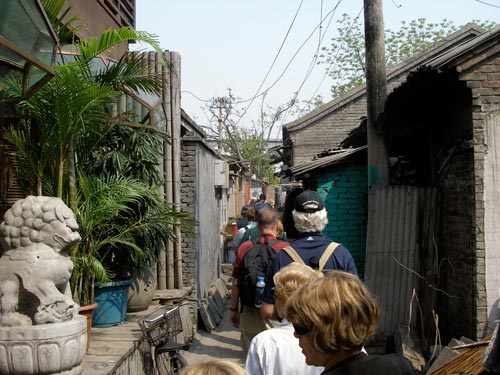
Making our way through the narrow streets
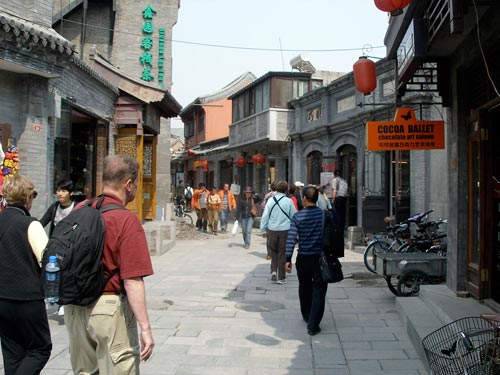
A shopping area
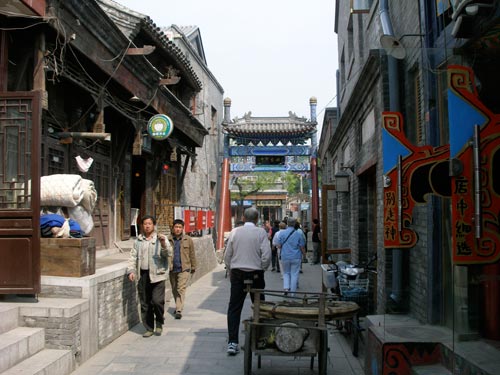
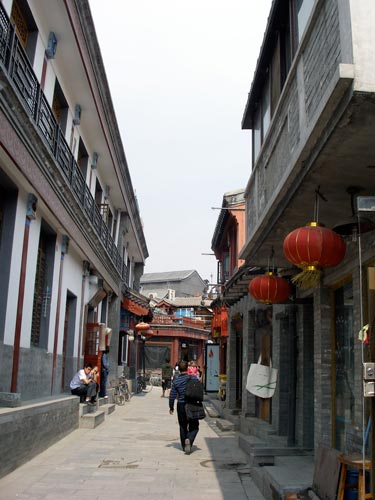
Chinese paper lanterns date back to 230 BC. In the days before electricity, they were used as a tool of illumination. Today they are still popular as decorations, particularly for special ceremonies and celebrations. They symbolize long life and good luck.
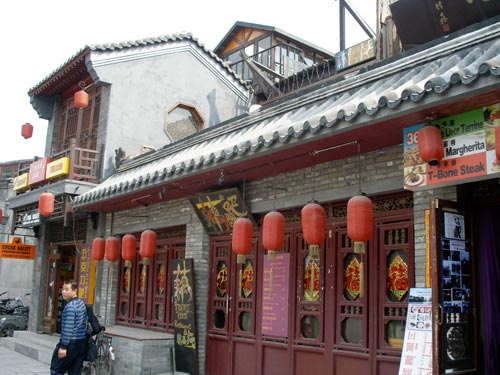
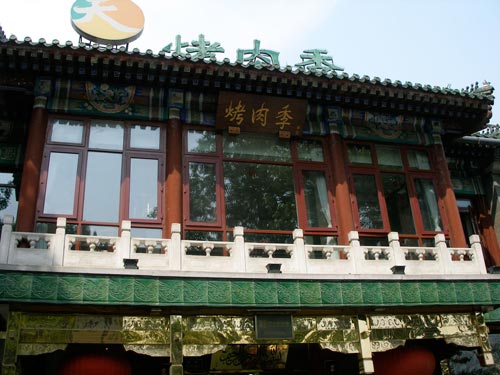
The Kao Rou Ji restaurant was built in 1848.
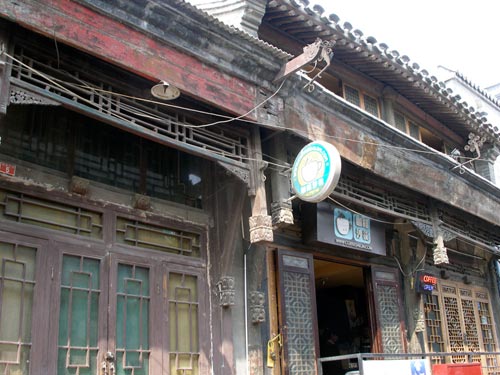
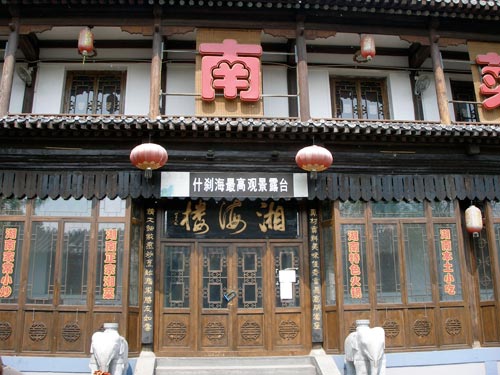

Houhai Lake
Known as the Shichahai Scenic Area, this region is composed of Qianhai Lake, Houhai Lake, Xihai Lake, assorted waterways, historic residences, and ten important Taoist and Buddhist temples.

A rickshaw driver lounges in his ride
Rickshaws first appeared in Japan around 1868. They soon became a popular mode of transportation, since they were faster than the previously used palanquins (sedan chairs), and human labor was considerably cheaper than using horses. Nowadays, runner-pulled rickshaws have mainly been replaced by bicycle rickshaws or motorized tuk-tuks. The word originates from the Japanese word jinrikisha, which literally means 'human-powered vehicle.'
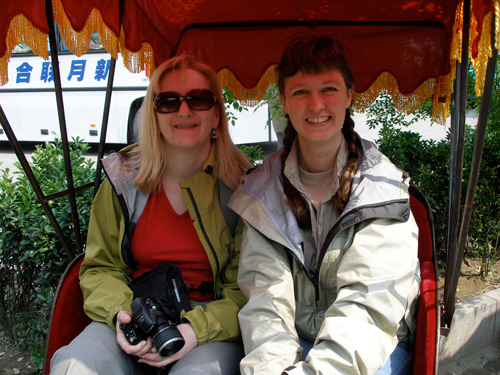
Preparing for a wild ride with squeaky brakes!
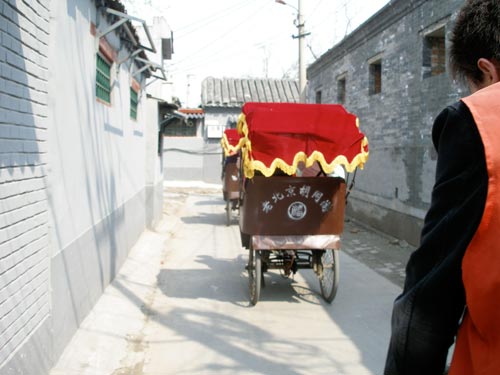
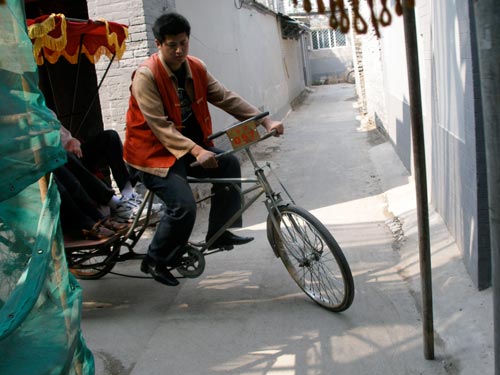
Tight corners...
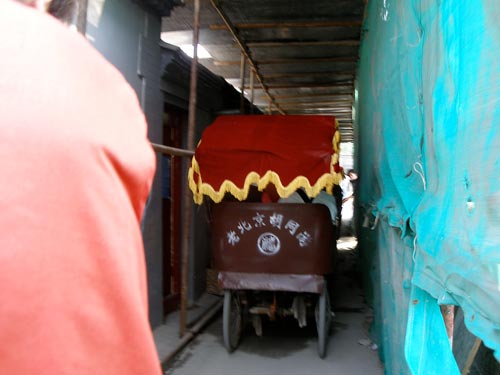
... and narrow passageways
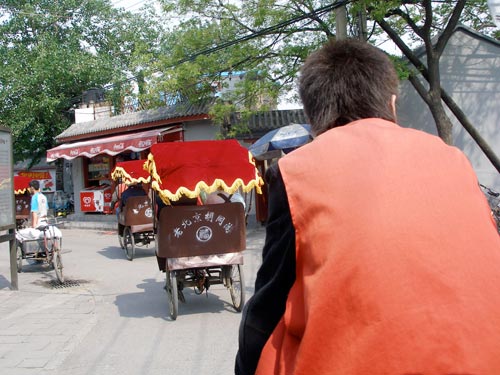
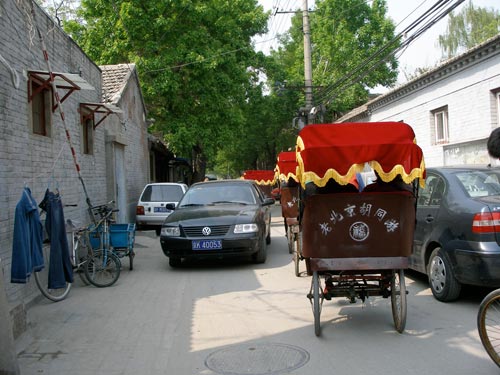
When it comes to cars...
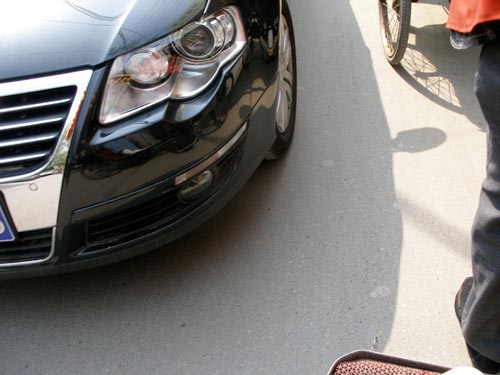
... 'might makes right!'
Some more views:
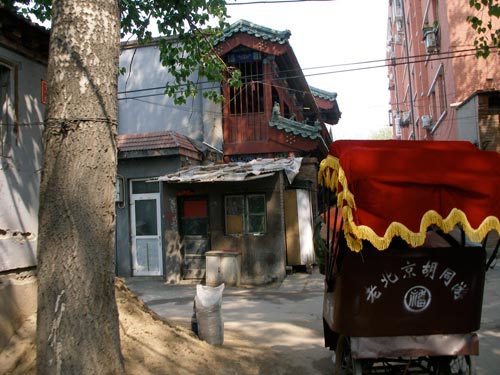
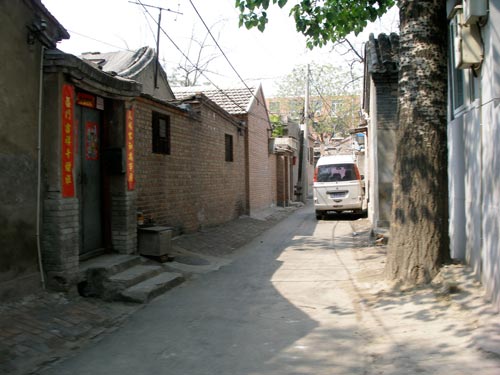
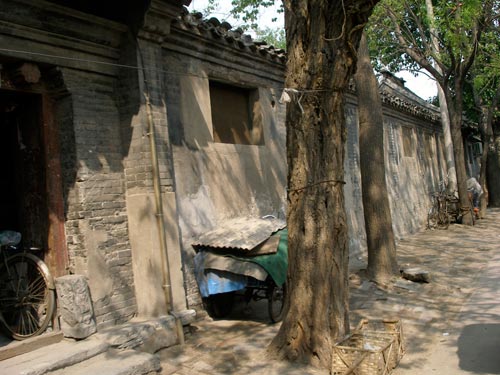
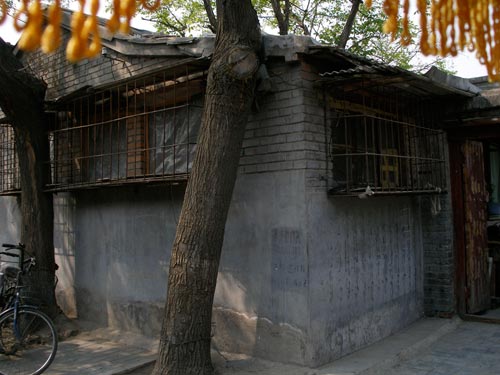
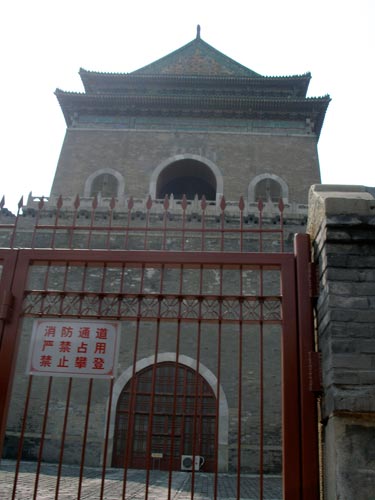
The bell tower

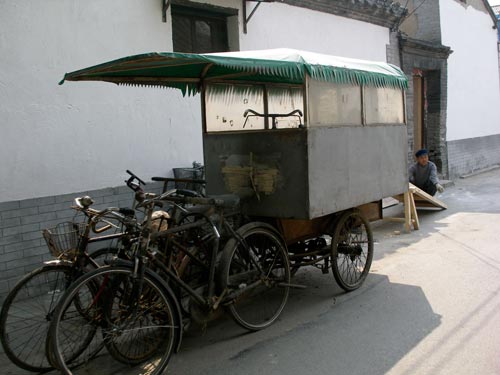
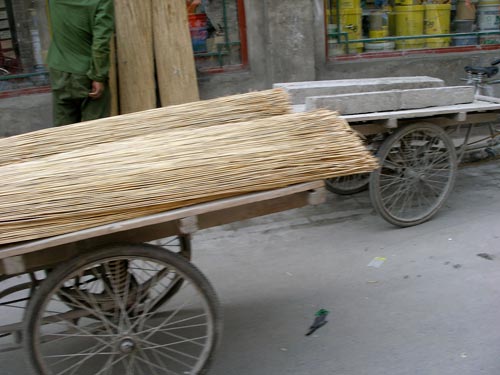
One our ride was over, we continued on by foot again, heading toward the home of a local family.
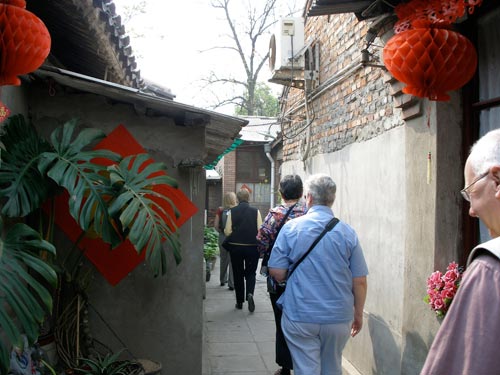
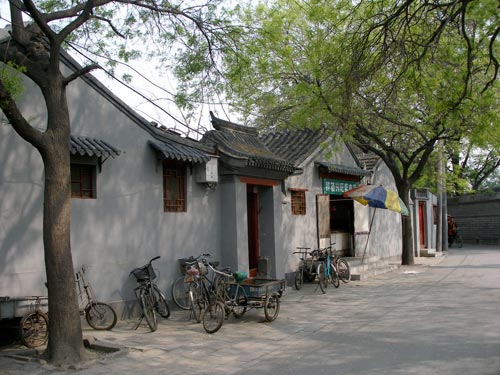
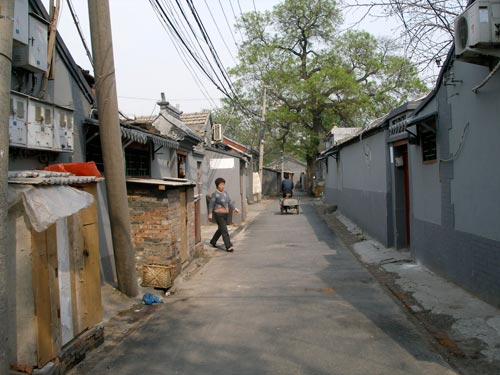
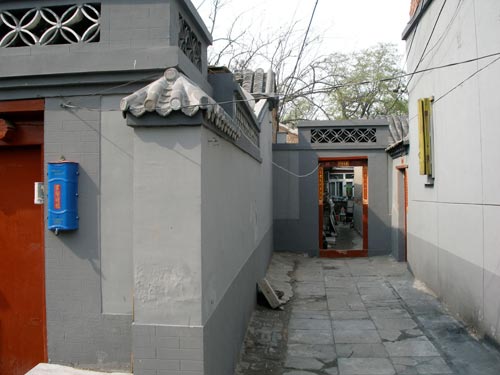
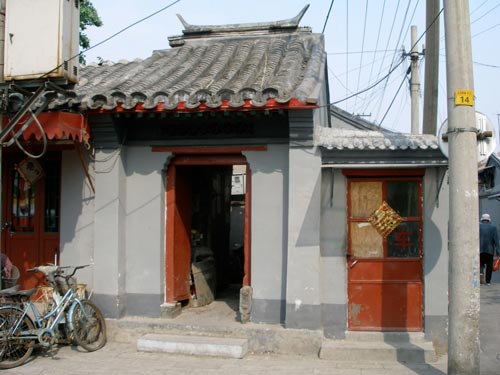
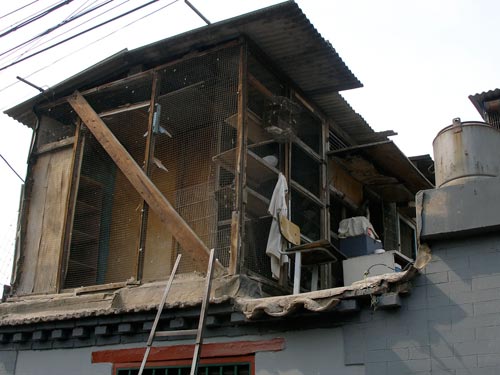
Many residents keep pigeons.
The Chinese have been raising pigeons for food (both eggs and meat) for more than 2,000 years. Furthermore, their homing instinct and speed made the birds ideal couriers in times of both war and peace. Nowadays, they probably also serve as pets, seeing as many people generally have neither the space nor the money to support anything larger.
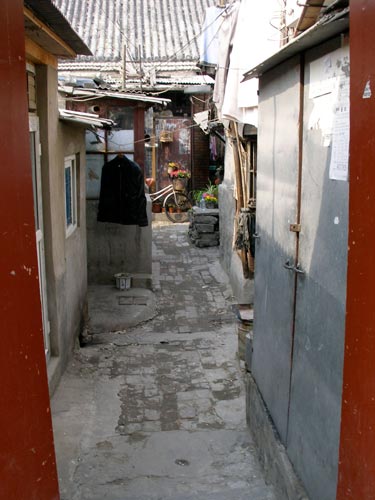
Peeking inside a small courtyard

